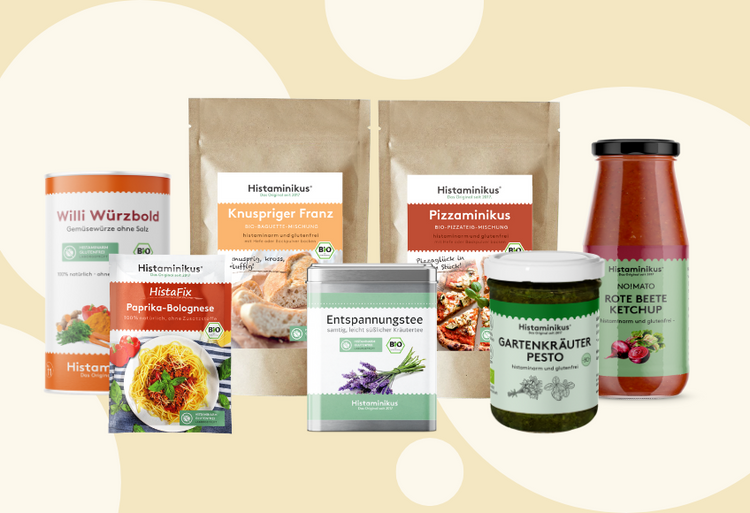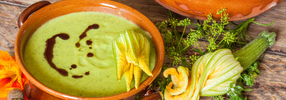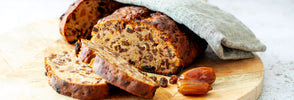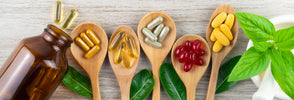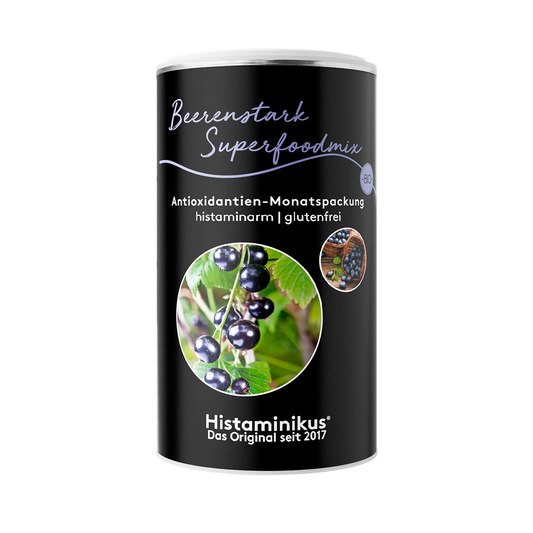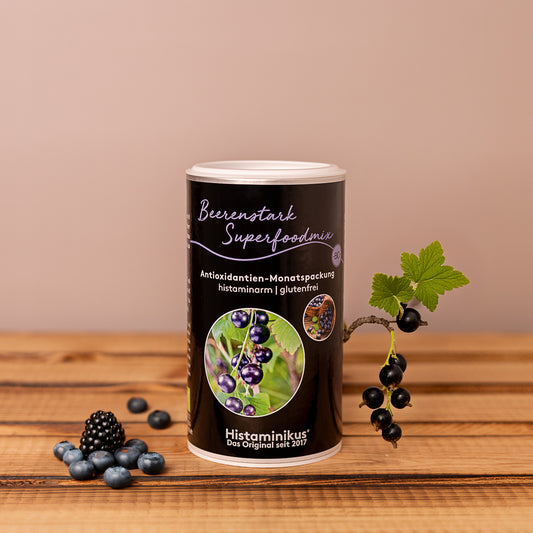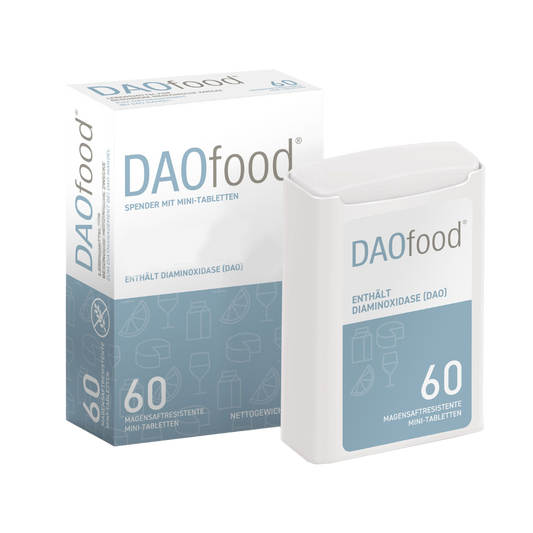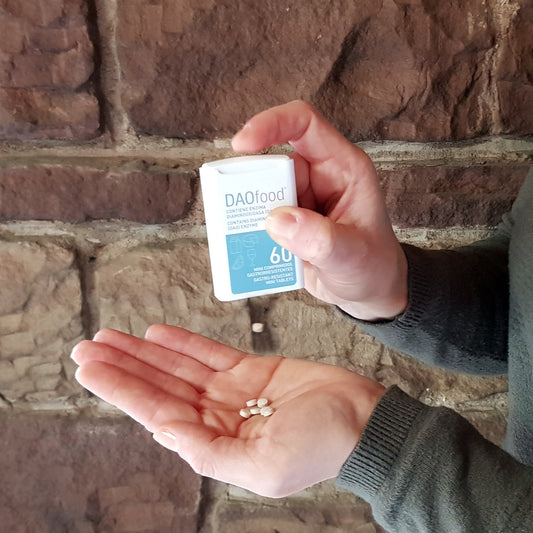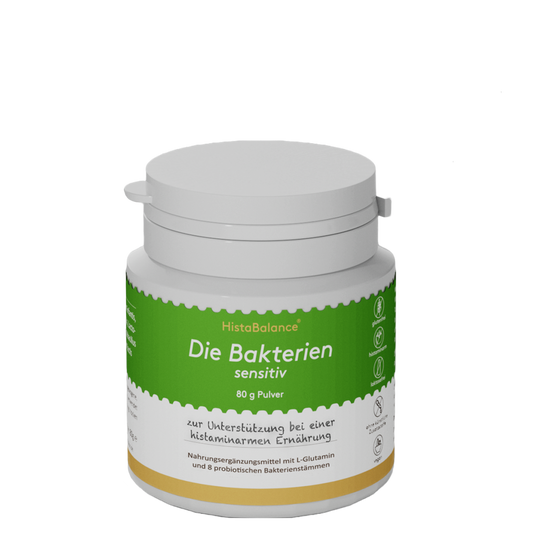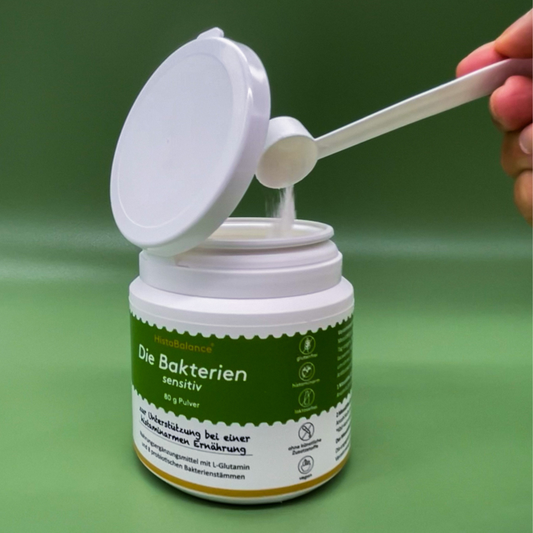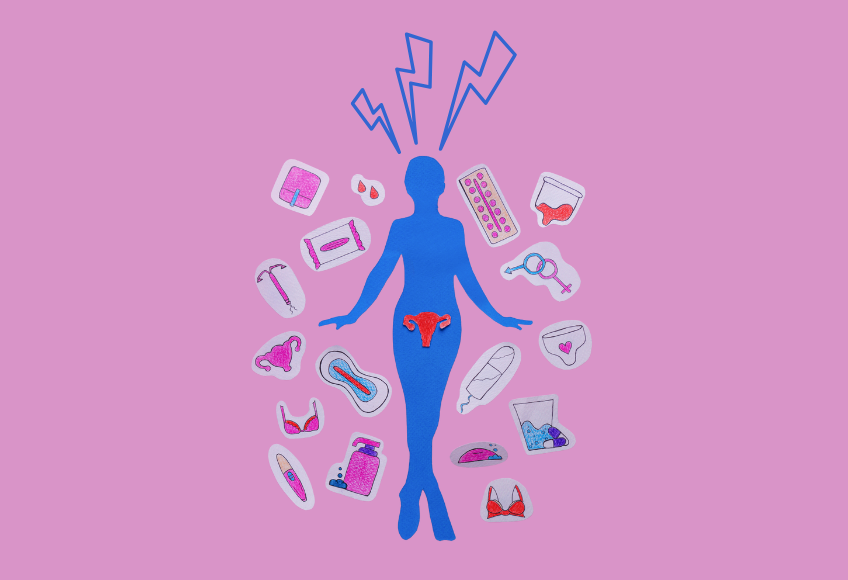
Migraines around the period
Many women know it: shortly before or during menstruation, the head begins to insist. The migraines are often stronger and lasts longer than usual. It is a special form of migraines that are directly related to the cycle. The symptoms occur regularly during this time - and many affected people know exactly what to expect. Here you get to know the background and learn what can help in such phases.
What is a menstrual migraine?
In some women, migraines appear again and again in a certain period of time - namely two days ago to three days after the period begins. This is called menstrual migraines. It is typical that this form of migraines occurs in at least two out of three cycles. Often this is not noticeable at first. The connection is only evident when it is specifically in demand or a cycle calendar is managed.
A distinction is made between two forms: the purely menstrual migraine only occurs around the period. However, the migraine -associated migraine is more common - so it occurs in this time window, but also on other days in the cycle. This migraine form is triggered by hormonal fluctuations. Compared to other migraine species, the symptoms are often stronger, take longer and are more often accompanied by sensitivity to light and noise, nausea or vomiting. This can severely affect the quality of life. Some affected people even hesitate to make important life decisions - out of worry that migraines get worse through more stress or new challenges.
How does menstrual migraine arise?
Shortly before the beginning of the period, many women clearly drop the estrogen levels - i.e. the concentration of an important female hormone. Experts suspect that this hormone drop can trigger migraines. Studies on animals indicate that such hormone fluctuations promote the release of a messenger in the brain: CGRP. CGRP stands for "Calcitonin Gene-Related Peptide" and is closely linked to the creation of migraines. It widens the blood vessels in the brain and triggers inflammation - a cause of the typical, pulsating headache. In a study of 2023 it was shown that women with migraines had significantly higher CGRP values in the blood during the period than healthy women. The exact connection has not yet been fully clarified - not even why some women are particularly sensitive to hormonal changes, while others do not develop migraines.
Even in menopause, migraine attacks can occur due to strong hormone fluctuations - especially for women who had already been affected. The good news: after menopause, i.e. when the hormonal changes are complete, the migraines usually become significantly weaker. However, it is rather rare that migraines appear for the first time in menopause.
PMS, histamine and migraines
PMS, the premenstrual syndrome, means that women feel different physical and mental symptoms in the days before their period. These symptoms usually occur a few days to two weeks before menstruation, i.e. in the second half of the cycle after ovulation. If the psychological symptoms such as strong mood swings or even depressive moods are particularly violent, one speaks of a premenstrual dysphoric disorder (PMDS) - a particularly strong form of PMS. Both forms can put a lot of strain on everyday life. It has long been known that female sex hormones have an impact on mast cells - these are cells in the immune system that, among other things, release histamine. Especially estrogen, especially in the form of estradiol, can activate these mast cells and thus boost histamine release. At the same time, estrogen also weakens the enzyme dao, which actually ensures that histamine is broken down. This creates a fairly nasty circulation: estrogen ensures more histamine, and histamine stimulates the ovaries to produce even more estrogen. If you also eat a lot of histamine -rich foods, it can mess up the hormones. Histamine sensitivity can also increase when taking estrogen substitutes, sometimes even a histamine intolerance. Progesterone plays an important counter -role here: it ensures that the estrogen does not overhand and inhibits the histamine release. If progesterone is missing, the balance can tip over and the problems with histamine and estrogen are larger.
What exactly causes PMS is not yet fully clarified. Researchers suspect that the hormone fluctuations between estrogen and progesterone play a role in particular. The messenger fabric serotonin, who influences the mood, is also important. His mirror often drops shortly before the period, which can increase symptoms. Some women are also genetically more sensitive to the hormones. Typical physical symptoms are breast and headache, muscle and joint pain, fatigue, digestive problems, abdominal cramps, water retention and skin problems. Mental fluctuations, irritability, concentration problems and drivelessness can occur mentally. PMS and migraines are often related, because migraines can also be triggered by hormonal fluctuations and the falling serotonin level before the period. About every fifth woman experiences PMS problems in the course of her life.
It is more of a devil triangle than a vicious circle between PMS, histamine and migraines. Because as described: not only migraines and PMs are related, but also pms and histamine ... as well as histamine and migraines!
Histamine is, so to speak, a little waking maker molecule in our body, which is particularly active when we are awake. It is released in the brain and ensures that we stay fit. Histamine plays a rather big role in migraines - especially if you consume a lot of it through certain foods such as red wine, chocolate or cheese. If the enzyme is also missing, the histamine in the intestine (DAO), it can quickly trigger a migraine. Then there is serotonin. With migraines, the whole tilts: First too much serotonin is released, the blood vessels contract, then the body quickly dismisses the serotonin - and the vessels, the vessels expand, inflammation and the typical throbbing pain begins.
Fortunately, you can eat serotonin precursors such as tryptophan in nuts or whole grain, and also help vitamin D or omega-3 fatty acids to keep the mirror in balance. Magnesium is also a real migraine helper. Especially in children, it has an effect-a bit of extra magnesium can reduce pain and seizures. And Q10, the small energy package for our cells, often seems to be missing in migraine patients. 200 mg helps quite well every day. Stress and Co. mess up our norepinephrine - this is a hormone that releases energy. If the mirror goes up just before a migraine, it can trigger the attack. There are also hormonal fluctuations, especially in women around the period. Esstrogen and progesterone influence serotonin, and when the hormones go down, there are often migraines. Not to forget:
Blood sugar fluctuations can also be nasty migraine trigger. Therefore, it is smart to eat regularly and balanced to keep the blood sugar stable.
What helps with PMS in general?
If the days before the days become a burden, it is good to know that there are many ways to help yourself. Here you will find an overview of helpful approaches to alleviate premenstrual complaints.
Medicines - yes or no?
In the event of very severe complaints, drug treatment can also be useful. Some women get hormonal contraceptives (like the pill) who suppress ovulation - often even without a break between the blisters (so -called long cycle). This can help reduce PMS symptoms and migraine attacks. However, this should be carefully considered due to the undesirable side effects and should only be considered as the last resort.
In pain such as head, back or chest pain, normal pain relievers can help. Against water retention - which often lead to voltage feelings - draining agents such as Spironolactone are sometimes used or certain nutrients such as calcium and vitamin E.
When the mood suffers sharply, antidepressants from the group of serotonin reuptake inhibitors (e.g. sertraline or citalopram) are sometimes used. These increase the serotonin level in the brain - this is a messenger fabric that puts you in a good mood. However, these drugs are usually only an option if other things do not help sufficiently.
Many women prefer to take it easier. Vegetable means such as monk pepper (effects against breaststroke) or St. John's wort (helps with mood lows) are natural alternatives. But the following also applies here: best talk to your doctor before you take something.
Above all, important:
- Vitamin B6, vitamin D and vitamin E
- Calcium and magnesium
- Omega-3 fatty acids (e.g. from fish or flax seeds)
Movement - gentle but effective
Regular, moderate movement works with so many physical and mental suffering. Sport helps to get rid of excess water and relieve cramps. Endurance sports such as walking, cycling, swimming or light jogging are particularly good. So -called endorphins are released - these are the body's own happiness hormones. Serotonin (the mood booster) is also increasingly formed by movement. But: Do not exaggerate it - if the load is too strong, your body can distribute more histamine, which can increase your symptoms.
Relaxation - the underestimated miracle cure
Stress is one of the largest amplifiers of PMS, migraines and other histamine -related reactions. So it is worth relaxing. Techniques such as yoga, autogenic training or progressive muscle relaxation help to become calmer inside. So you can deal better with the emotional and physical fluctuations around the period.
Home remedies & alternative therapies
There are many other gentle helpers that you can try out:
- Peppermint oil on the forehead - relieves headache
- Lavender oil - has a calming effect, just a few drops on the temples
- Meliss tea - with inner unrest and stress
- Magnesium - has a relaxing effect on muscles and nerves
- Osteopathy, neural therapy or thorn break therapy-especially when tensioning in the back or pelvic area
- High enema - sounds unusual, but can help relieve the liver (with migraines)
- Low -histamine nutrition!
Avoid trigger - this includes z. B. certain foods, incompatible additives, caffeine, alcohol or strong blood sugar fluctuations
Conclusion: you have many options
PMS and migraines do not have to be fate - and also no permanent pollution. Whether nutrition, movement, relaxation or targeted support from herbal or medical means: You have many ways to do something good for your body and improve your well -being. Hör auf dein Gefühl, was dir guttut – und hol dir im Zweifel Unterstützung bei Ärzten oder Therapeuten.
Dietary supplements
-
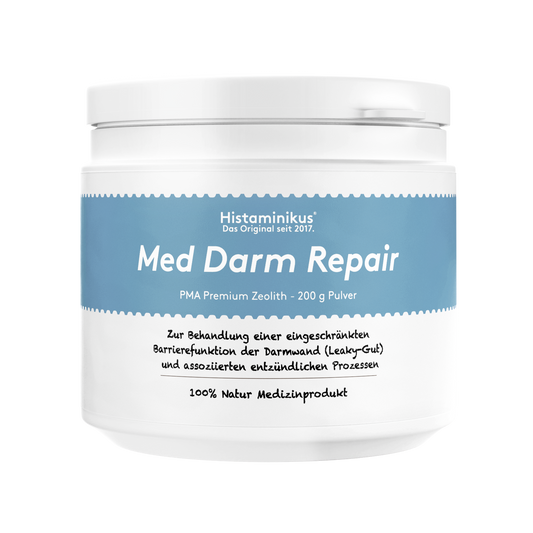
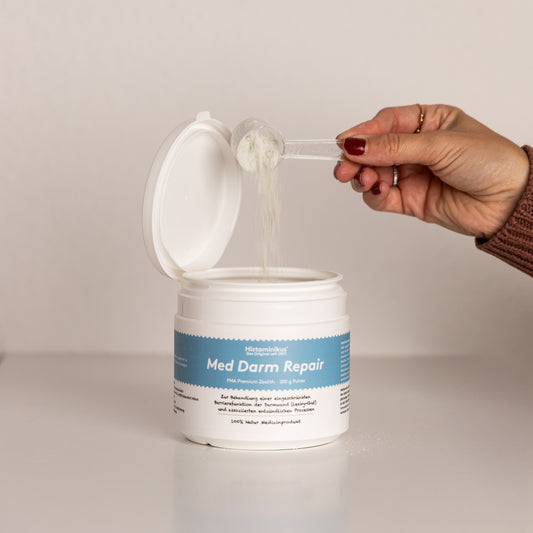 NEW
NEWMed Darm Repair
Regular price €39,99 EURRegular priceUnit price 199,95€ / per kg -
Beering superfoodmix organic
5.0 / 5.0
(5) 5 total reviews
Regular price €28,99 EURRegular priceUnit price 170,53€ / per kg -
The bacteria sensitive
4.66 / 5.0
(143) 143 total reviews
Regular price €32,90 EURRegular priceUnit price 411,25€ / per kg
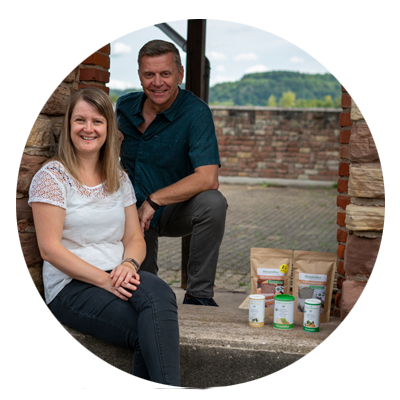
From those affected for those affected
We are Thomas and Michaela Zinser, founder of Histaminikus.
Because of the own histamine intolerance of Michaela and our son, we founded Histaminikus. The frustration does not find any suitable histamine food has spurred us to develop low -histamine food.
We would like to give you back a piece of quality of life. Feel free to look around with us.
Kind regards
Thomas and Michaela
